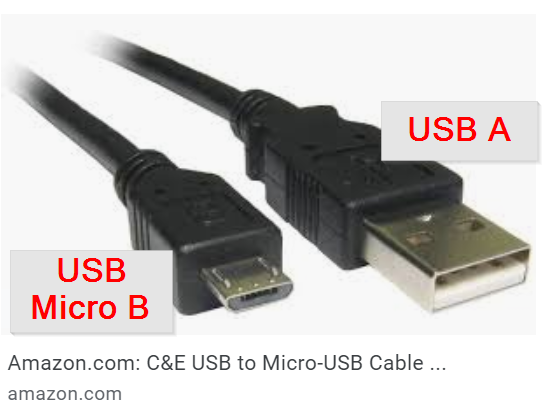non-laser resin based printer
-
@bearer that would mean that I supply the RPI from the Duet with power, otherwise RPI has no power connection, except USB
-
@Fasi said in non-laser resin based printer:
otherwise RPI has no power connection, except USB
maybe you should make your own thread.
But as the Duet has a only micro USB connector, the cable should go to the Pi's full size USB A leaving the Pi's micro USB for supplying power to the Pi. You cannot power the Pi from the Duet's micro USB.
If you need to provide the Pi with 5V from the Duet you will need to use the GPIO pins on the Pi and a 5V pin on the Duet.
-
@bearer Sorry, but I didn't understand that. What do you mean with USB A? Standart USB Kable for PC in the Size A? Can you post a picture here to illustrate this? I will create my own thread later, I thought it would be better because the topic was already discussed here.
-
@Fasi said in non-laser resin based printer:
Can you post a picture here to illustrate this?

There is only one way to connect such a cable between the Duet and the Pi. Micro B needs to go in the Duet and it will not flow power back to the Pi. (Because of the design in the Duet, nothing to do with the cable itself)
-
@bearer ok, and from where and via which port does RPI get power? The other side of the cable is then connected to the power supply? Sorry, I do not understand.
-
Recent RPi has several USB ports. It has a micro USB that is an input for power only, no data moves through that port.
It has up to 4 USB A ports that act as "host" ports. They can power, and exchange data with, mice, keyboards, etc, etc. They are two-way data.
Therefore, you could power the Pi through its input only power Micro USB (cable comes FROM a power supply), and also connect a USB A out of the Pi to the Micro USB on the Duet. This will allow appropriate software on the Pi to control the Duet. The Duet will still need VIN (Screw Terminal) power for motors, heaters, etc.
-
@Danal Oh ok, now it's clear, sorry, I forgot the other USB ports. Alright !!!
-
And, having said all of that, it seems like massive overkill to use a Duet on one stepper and two limit switches. Especially when the NanoDLP software supports driving a "step stick" style stepper driver directly from the Pi.
https://www.nanodlp.com/download/#pcb
While they show a circuit board, this looks simple enough to breadboard.
-
@Danal Yes, I've already read that, of course it's totally exaggerated with the Nanodlp on the Duet. I just wanted to have everything in one device, whether that's the best solution - I don't insist, but as a test.
Thank you for the clarification!!! -
@Danal as I said, this is only intended as an additional option. My printer will otherwise have many useful options such as 4-fold extruder changer, endless z-axis (transfer belt), status LEDs, etc. One of the options is supposed to be LCD SLA printing, therefore the effort.